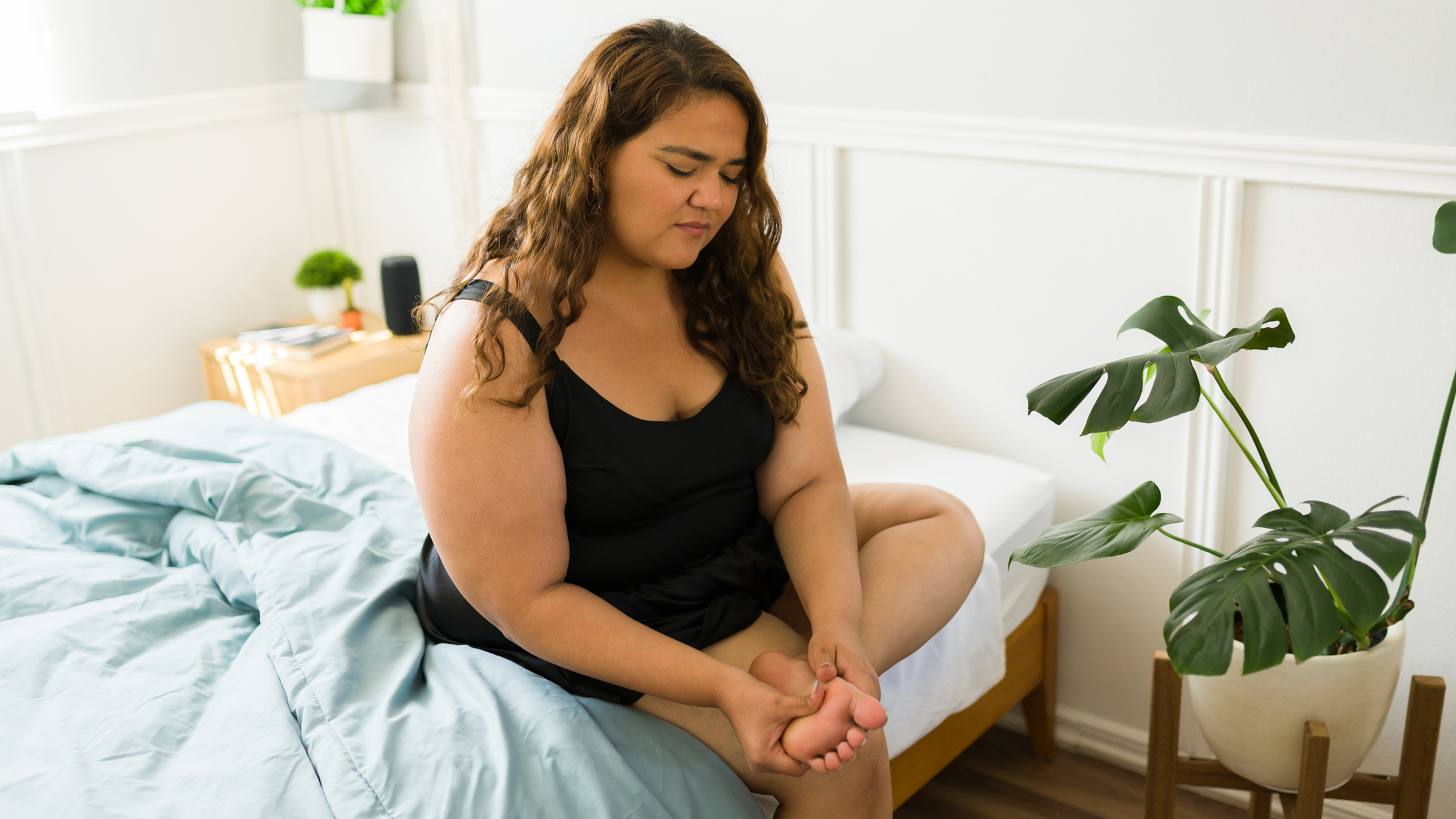How To Prevent Marathon Training Injuries
It’s not possible to completely eliminate the risk of injury during marathon training, but you can reduce your chances

The first few weeks of marathon training involve getting into the routine of running regularly and are often the most enjoyable stretch of the programme. You’re relatively fresh, probably seeing rapid improvement in your fitness, and building up the amount you run slowly with the race still months away.
In the second phase of a marathon training plan things get a little tougher. The weeks of running are adding up and while you’re fitter, you’re also fatigued and running further each week. In this period of marathon training your injury risk can be at its highest, and you need to be alert to any persistent pain or stiffness to make sure they don’t become an injury.
To help you prevent, spot and treat marathon training injuries, we spoke to Oli Williamson, a specialist physiotherapist at Marylebone Health in London.
Oli Williamson is a specialist physiotherapist at Marylebone Health in London and has also worked with the English Institute of Sport, British Triathlon and the British Olympic Association. He has a degree in Sports & Exercise Science and a masters in Physiotherapy, both from Leeds Beckett University.
What are the common injuries that come up during marathon training?
There are two types of injury that are likely to occur from long-distance running: Myofascial, including tendinopathy and fasciopathy, or a bone injury.
Myofascial injury will be things such as achilles tendinopathy, or a high hamstring tendinopathy —that’s a tendon that’s become inflamed.
The most common type of bone injury is medial tibial stress syndrome. Some people call this shin splints—we’ve moved away from that term now. This can range from anything where the bone becomes inflamed from the muscle and the fascia pulling on it, all the way through to a bone stress injury where the tibia itself has become inflamed from inside the bone. Other bone-stress injuries can occur on the foot and the hip as well.
How do you reduce your risk of injury during marathon training?
One thing the evidence tells us is that you’ve got to manage your training volume well. If you’re a novice runner, that means working with a coach or a well-recognised program to help build you up slowly over time, so you’re not suddenly jumping from zero to 100 miles in a week. It sounds obvious, but even the elites get it wrong. And make sure you’re giving yourself recovery weeks within your plan to allow tissue to recover and allow adaptations to happen.
The second thing is nutrition optimization. You’re likely to pick up a bone-stress injury if your energy balance is not correct. We have a negative energy balance and a positive energy balance, and it’s really easy to slip into a negative energy balance when you’re training for something new, so you’re expending more calories than you previously were, and just not fueling enough for that expenditure. Working with a nutritionist and getting your nutritional balance right is key to protect against bone-stress injuries.
From a myofascial perspective, the soft tissue injuries such as achilles tendinopathy, plantar fasciopathy, or a calf strain, then managing your training volume well and nutrition does have an impact, but more important is including strength training for runners within your program. It will ideally be done before you start your running program, so you’re preparing the soft tissues to be ready for the run volume.
There’s no replication for running, but you can certainly prepare the muscles and the tendons—the soft tissue—and improve their capacity to handle forces and volume. The forces upon someone’s body when they are running can be up to 1½ to two times bodyweight.
Your main cause of injury is going to be the volume of the running. Evidence has shown that bodyweight, shoe selection, and even speed running isn’t necessarily a strong correlation with injury, but we know volume is. Not being prepared for that volume is probably the biggest.
What should you focus on with your strength and conditioning?
It should focus on the region that you’re likely to load up when you are running. The main areas in slow-speed, long-distance running are the calves, that’s a combination of the soleus and gastrocnemius, and also your quads. But also just having a well-rounded programme that looks after the posterior chain, so hamstrings, glutes, and lumbar spine region as well as the calf and foot and ankle, is a really good bit of advice.
People probably underappreciate how much stress and demand is placed through the calf and/or the quad for slow-speed, long-distance running. Don’t assume that bodyweight calf raises are enough. They will definitely help to an extent, but loaded calf raises will be a really good exercise for a long-distance runner.
A good physiotherapist and strength and conditioning coach will be able to help filter what you may need to work on.
- Our expert guide to strength training for runners
How can you tell when you are injured?
Looking at bone injuries first. A stiff foot that’s not getting better is something to highlight to a professional. For the shin, it might feel like a bit of bruising on the inside of your shin. If you feel symptoms early in your run or pain that isn’t going away, then that’s something to look out for.
Also, pain at night. Within the foot bones, the shin bones, the tibia and within the femur, night pain is something that we look at. When you stop running, any pain that starts to come on at rest or that comes on in the evening is a yellow flag. Highlight this to a clinician to help rule in or rule out any bone pathology. It feels like a bit of a dull, deep ache. Sometimes it can be quite a sharp pain on impact as well.
For soft-tissue injuries, within the tendons and fascia, you’ll potentially get more stiffness in the morning. When you first wake up you may be hobbling around, that’s just indicative that your tendons and non-contractile tissue are a little bit inflamed. Overnight without movement, inflammation can build up and that’s why the first few steps in the morning can feel stiff. If you’re starting to get stiffness or pain on the foot and/or in the achilles region in particular, it’s likely that you’ve got an early onset of overload or tendinopathy or fasciopathy. It’s best to get that checked out with a clinician to help diagnose that and put a plan together to help keep you running.

Do running shoes make a difference?
The evidence tells us that the best marker is just comfort. There’s been biomechanical studies done that have looked at lots of different shoe types, and the main finding was that those who had comfort with their shoe seemed to have a better outcome.
What do you do when injured?
Your first port of call is a physiotherapist who has been working in long-distance running or endurance sport. If your symptoms are so severe that you feel you need to check in with a sports doctor, that would also be a good idea, but with 90% of the initial signs of injury, seeing a physiotherapist is probably most appropriate. Unless you can’t bear weight. If you can’t bear weight you’re probably better off going to see the sports doc first.
Ignoring those warning signs I’ve gone through is probably the biggest mistake that I see. As physiotherapists we prefer to see and help people who’ve got earlier signs because we will get far better outcomes than trying to help someone who’s already injured.
Get the Coach Newsletter
Sign up for workout ideas, training advice, reviews of the latest gear and more.

Nick Harris-Fry is a journalist who has been covering health and fitness since 2015. Nick is an avid runner, covering 70-110km a week, which gives him ample opportunity to test a wide range of running shoes and running gear. He is also the chief tester for fitness trackers and running watches, treadmills and exercise bikes, and workout headphones.
